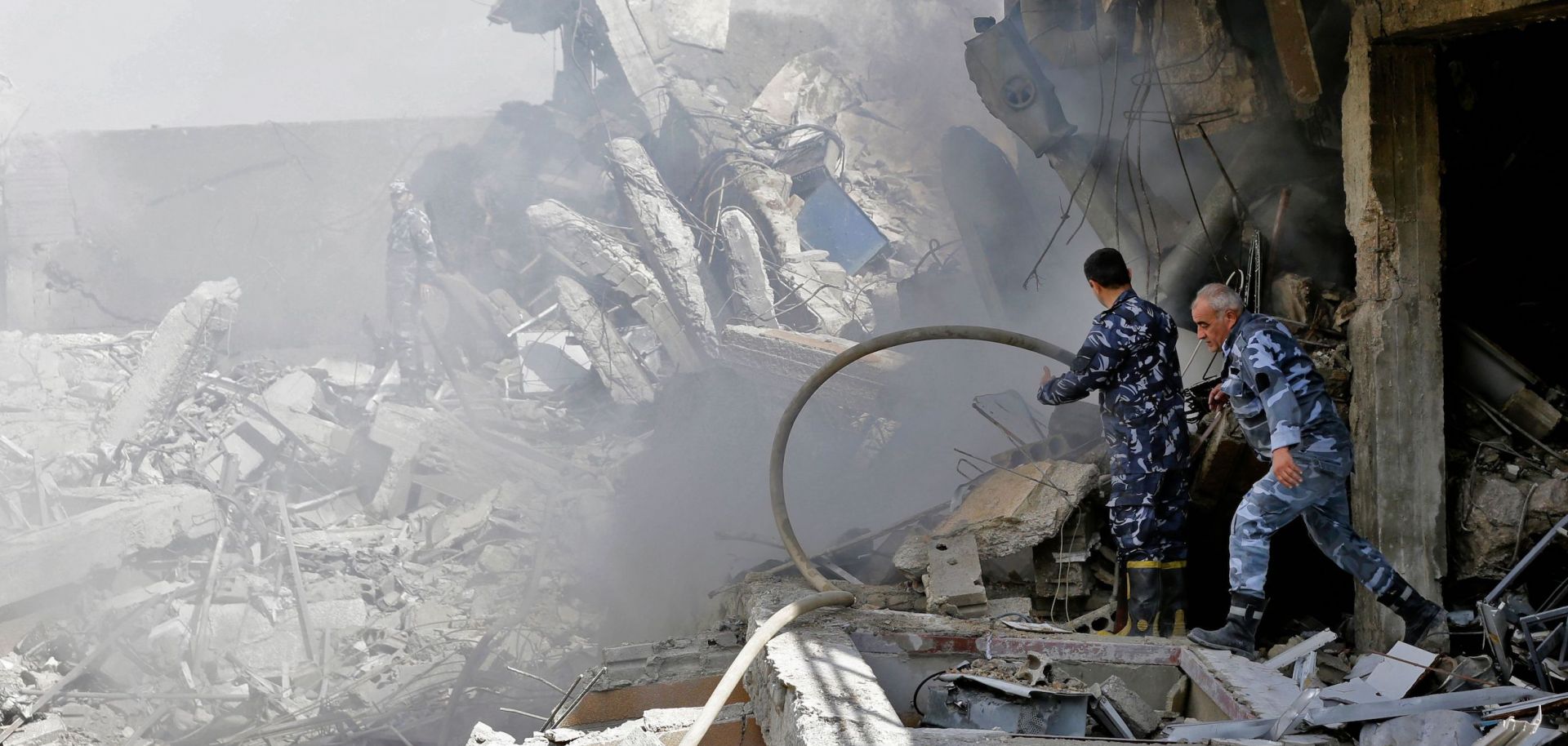ASSESSMENTS
Assessing the Impact of the U.S.-Led Strike on Syria
Apr 16, 2018 | 17:59 GMT

Syrian soldiers inspect the wreckage of a building on April 14, 2018, after the United States, Britain and France launched strikes against Syrian President Bashar al-Assad's regime in response to an alleged chemical weapons attack.
(LOUAI BESHARA/AFP/Getty Images)
Highlights
- With the latest U.S.-led punitive strike in Syria, the United States has demonstrated its commitment to deterring further chemical weapons attacks.
- The United States and its allies are constrained in their response in Syria by the presence of Russian forces.
- The latest punitive strike will likely deter the Syrian government from using nerve agents for a considerable time, but Syrian troops may continue to test those boundaries, especially with chlorine gas.
Subscribe Now
SubscribeAlready have an account?
